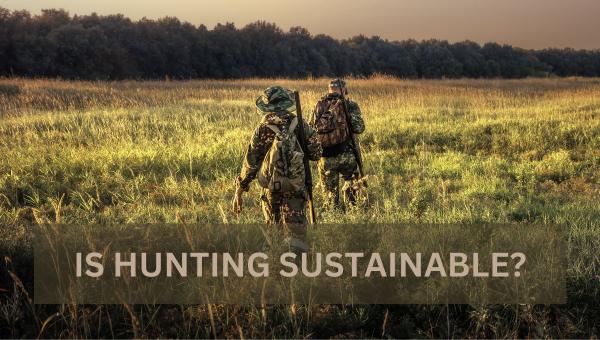Is Hunting Sustainable?
- October 29 2022
- 3 min read
Is Hunting Sustainable?

As people are becoming more eco-conscious about where their food comes from, many are looking to hunting as a possible sustainable alternative to farmed meat. However, hunting remains a controversial topic within the sustainability movement. What are the key points to consider when looking at the sustainability of hunting?
A more eco-friendly source of meat
Problems with farming meat
Many groups today call for us as a society to move away from meat eating altogether in order to benefit the planet. Veganism has risen dramatically, and more eco-friendly meat alternatives are being developed. Intensive meat farming, especially factory farming, is known for its negative environmental impact. With the high levels of methane (a potent greenhouse gas) that cows and sheep release, the water and energy usage for large facilities to store animals in, and the clearing of land to grow monocrop grains for animal feed, it’s widely agreed that this method of farming is destructive.
Hunting as a more sustainable option
When we look at buying meat, opting for organic produce is a great way to support earth-friendly farming. Local, grass-fed meat has become increasingly popular in recent years. But many are starting to look at hunting as a way to take their eco-conscious meat eating to the next level.
Hunting meat is undoubtedly more sustainable than factory farming. There’s none of the land and water pollution that comes with farming practices, and the meat is usually healthier too as the animals haven’t been pumped with antibiotics and hormones.
Ecological conservation
Regulated hunting supports conservation efforts in a number of ways. The most notable ways are funding projects and maintaining animal populations. As sustainability is about keeping the earth liveable through practices that help maintain ecological balance, hunting is inherently sustainable through this lens.
Funding conservation efforts
The money that hunters spend on licenses, tags and stamps provides funding for environmental projects. As well as this, taxes on firearms and ammunition also contribute to conservation efforts across the US. Preserving habitats of wildlife is one of the main ways legislation has helped encourage sustainable hunting.
Managing Animal Population Sizes
As human populations led to a severe reduction in wild predators across the US, prey animal populations can become over abundant. This causes issues to both people and the environment. When deer and elk populations are too large, the number of vehicle collisions increases dramatically. In addition to this, deer cause damage to plants and trees through their eating habits and fraying with antlers.
Regulated culling of deer helps keep populations at an optimal level to support their wellbeing as a species, keep habitats in tact, and protect the human populations in surrounding areas.
Sustainable Hunting Accessories
If you’re interested in sustainable hunting practices, you should support this with the gear you buy. Stockists for outdoor and hunting stores can help encourage consciousness with these eco-friendly, personalizable items:
Perfect for keeping coffee piping hot during long days outside.
To keep all of your valuables safe, no matter the weather
Eat in a sustainable way whilst out hunting, and take them home with you to cut down on waste
Gain access to Orders, Tracking, Custom Options and Much More!